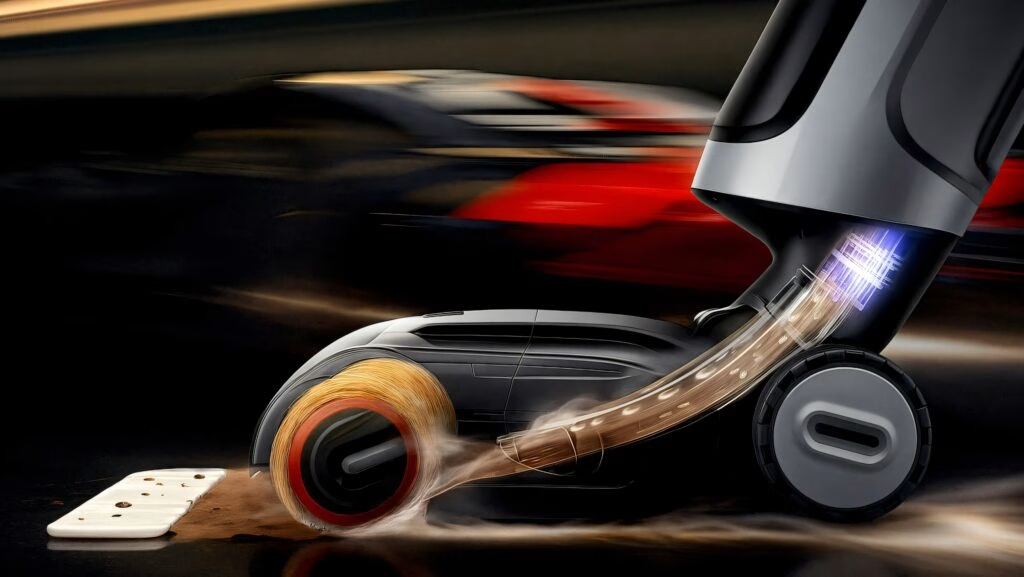Why Would a Vacuum Cleaner Company Want to Build the World’s Fastest Hypercar?
It sounds like the setup to a joke: a company famous for vacuum cleaners decides to take on the likes of Bugatti and Koenigsegg in the hypercar arena. But for Dreame Technology, this isn’t a punchline—it’s a bold new chapter. Founded in 2017, Dreame has made a name for itself in the world of cordless vacuums, robotic mowers, and other smart home gadgets. Now, the company is setting its sights on the ultimate automotive bragging rights: building the world’s fastest car.
Why the leap? For Dreame, it’s about more than just speed. The company sees car manufacturing as the “crown jewel of industry,” where innovation, supply chain mastery, and brand power collide. Dreame’s leadership believes their experience in global markets and their reputation for high-end, innovative products can translate to the hypercar world. And let’s be honest—there’s a certain poetic logic to a company obsessed with suction now chasing the ultimate in downforce.
How Does Dreame’s Plan Stack Up Against Industry Giants?
Dreame isn’t the first tech company to eye the automotive world. Xiaomi and Huawei have already made inroads, but Dreame’s ambitions are even more audacious. Instead of starting with a mass-market EV, they’re gunning for the hypercar elite. That means taking on established legends like Bugatti, Koenigsegg, and SSC.
To put things in perspective, the current production car speed record belongs to the SSC Tuatara, which hit 474.8 km/h (295 mph) in 2022. On the electric side, BYD’s YangWang U9 Track Edition recently set a new benchmark at 472.41 km/h (293.54 mph), edging out the Rimac Nevera. These numbers aren’t just impressive—they’re the stuff of engineering legend.
Dreame’s approach is to leverage China’s mature EV supply chain and manufacturing ecosystem. The company already boasts more than 6,000 patents (some reportedly tied to EV tech) and has assembled a 1,000-strong automotive team, including industry veterans. Instead of reinventing the wheel, Dreame aims to “stand on the shoulders of giants,” collaborating with established suppliers to fast-track development.
What’s Different About Dreame’s Strategy Compared to Past Attempts?
It’s impossible to ignore the ghost of Dyson’s ill-fated EV project. Dyson, another vacuum giant, poured billions into developing an electric SUV before pulling the plug, citing commercial viability concerns. Dreame’s leadership is acutely aware of this cautionary tale. Their plan? Avoid the “build from scratch” trap and instead tap into China’s vast network of EV expertise.
There’s also a cultural difference at play. Dreame’s public statements emphasize humility, strategic patience, and a willingness to learn from others’ mistakes. They’re not betting the farm on a single moonshot. Instead, they’re positioning this as a test of their accumulated know-how in R&D, global operations, and brand-building.
Can Dreame Really Compete With the Fastest Cars on the Planet?
Let’s not sugarcoat it: the hypercar segment is brutally competitive. Breaking the 500 km/h (310 mph) barrier is the next big milestone, and established players like Koenigsegg, Hennessey, and Bugatti are already in hot pursuit. Dreame’s teaser images hint at a Bugatti-esque silhouette, but it’s still unclear what the final product will look like—or whether it will even make it to production.
However, Dreame does have some unique advantages. Their track record in rapid product development, global market penetration, and high-end branding could help them stand out. The company’s willingness to collaborate, rather than go it alone, might also give them a leg up in navigating the complex world of automotive manufacturing.
What’s the Timeline and What Should We Watch For?
According to Chinese media, Dreame’s electric hypercar is slated for a 2027 debut. That’s ambitious, but not impossible—especially if they can leverage existing supply chains and partnerships. The company’s automotive division, Dreame Auto, is already staffed up and working on the project.
The real test will be whether Dreame can deliver not just on speed, but on the full suite of hypercar expectations: design, handling, luxury, and reliability. After all, building a one-off record-breaker is one thing; creating a production car that can wow both engineers and enthusiasts is another.
What Does Dreame’s Move Say About the Future of Chinese Innovation?
Dreame’s hypercar ambitions are part of a broader trend: Chinese companies are no longer content to play catch-up. They’re setting the pace in EV technology, battery development, and now, even in the rarefied world of hypercars. According to the International Energy Agency, China accounted for more than 60% of global EV sales in 2023—a sign that the country’s automotive ecosystem is both massive and mature.
Dreame’s leadership frames this as a mission to “bring Chinese smart manufacturing to the world’s high-end market.” If they succeed, it could further cement China’s reputation as a hub for cutting-edge automotive innovation.
The Big Takeaway
Dreame’s quest to build the world’s fastest hypercar isn’t about perfection—it’s about smarter adjustments. They’re betting that a mix of humility, collaboration, and relentless innovation can help them pull off what others couldn’t. Start with one bold move—like Dreame’s leap from vacuums to velocity—and you’ll likely spot the difference by month’s end.

